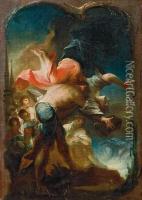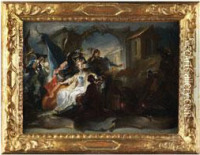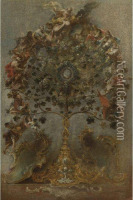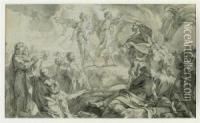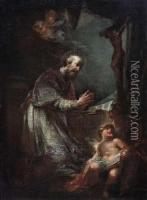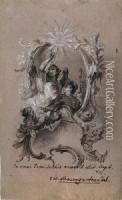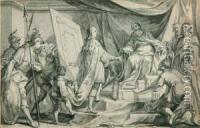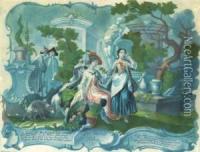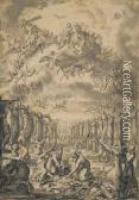Johann Wolfgang Baumgartner Paintings
Johann Wolfgang Baumgartner was an 18th-century German painter, particularly known for his contribution to the Rococo movement. Born in Kufstein, Tyrol, in 1704, Baumgartner received his artistic training in Augsburg, a city renowned for its vibrant artistic community during the Baroque and Rococo periods.
Baumgartner's work was characterized by its dynamic compositions, rich color palette, and the incorporation of light, which was a hallmark of the Rococo style. He was primarily known for his frescoes and oil paintings, which often depicted religious themes, allegorical scenes, and mythological subjects. Baumgartner's style was influenced by the dramatic expressiveness of the Baroque, yet it also embraced the lighter, more playful qualities of the Rococo, which became popular during the early 18th century.
Throughout his career, Baumgartner was active in Augsburg and became one of the city's leading artists. His art found a receptive audience among the patrons of Southern Germany, where he contributed to the decoration of numerous churches and palaces. Among his notable works are the frescoes in the church of St. Ulrich and Afra in Augsburg and the ceiling paintings in the Schaezlerpalais, which showcase his skill in creating the illusion of three-dimensional space.
Baumgartner's paintings were characterized by their vivid storytelling and attention to detail, qualities that made him a sought-after artist in his time. He was also known for his collaboration with other artists, such as Johann Georg Bergmüller, with whom he worked on various projects.
Johann Wolfgang Baumgartner died in Augsburg in 1761. His legacy continued through his influence on the Rococo style in Southern Germany and the artists who followed in his footsteps. Despite not being as widely known as some of his contemporaries, Baumgartner's work remains an important part of German Rococo art history.



